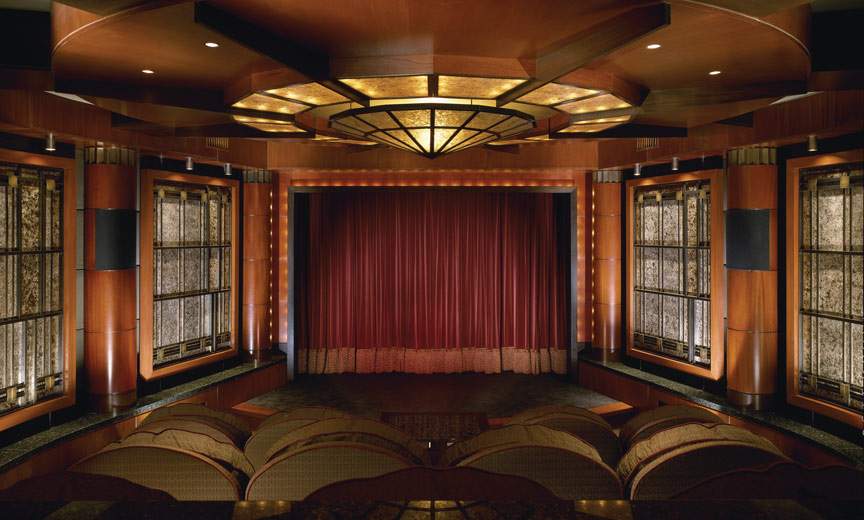Theo Kalomirakis reveals how he creates spaces that rival the magic of the silver screen, while also trying to keep his clients from overspending.
Despite the fact that his company does no advertising, Theo Kalomirakis is something of a legend in the world of home theater design. He won the industry’s coveted Best Dedicated Home Theater design award every year he entered — nine times in all —until he simply decided to stop competing. By 2003, his colleagues had already presented him a Lifetime Achievement Award for his commitment to excellence, and over the decades, his clients have included Dwayne “The Rock” Johnson, Eddie Murphy and Disney World. “We have a reputation built on word of mouth that began at the end of the ‘80s, so people know us,” the designer says matter-of-factly.
Kalomirakis’ love affair with cinema dates back to his childhood in Athens, where he created his first homemade theater on the terrace of his apartment out of a bedspread stretched between two posts and a 16mm projector. While barely a teen, he joined a film society and began reviewing movies for a film magazine in Greece. By 1971, he’d made a first movie of his own — with a grant from the Fulbright Foundation. The following year, it became the first and only Greek-made film invited to the New York Film Festival.
Lights, Camera, Action
With that momentum, he moved stateside and began to study moviemaking seriously in New York, only to become disillusioned by his own work. Salvation arrived in 1984, the first time he saw a projection TV. This, he thought, he could elevate to recapture the wonder he’d experienced in Old World cinemas as a child.
Today, Kalomirakis is considered the grand maestro of home theater, and when he speaks, it’s with the authority of an artist approaching a blank canvas. “We help people if they have the space and the willingness that comes assoiciated with creating a real theater in the home,” he says. “Ours is a more … specific way of using space. I personally believe that a home theater should be an immersive experience. I can’t focus on having the kind of experience I’d have in a cinema if there’s furniture, kids and animals around.”
Typically Kalomirakis conceives his designs around what his clients are willing to spend per square foot. From there, he’ll ask about aesthetics: should the theater be more modern, or resemble the classic movie palaces of yesteryear? Lighting is critical. Proper acoustics are essential. Ideally, every chair will be the best seat in the house. And then, he says, there are the windows.
“Half of the time I spend creating a new design goes toward figuring out what to do with the windows most rooms have,” he writes. “I would rather not cover them with curtains. … The only curtain in the room should be the one in front of the screen. When I must deal with windows, I usually try to hide them behind some type of treatment, usually operable panels that conceal acoustic treatments.”
New Directions
Until recently, Kalomirakis preferred not to get involved with electronics choices, choosing to focus instead on design and acoustics. But after seeing unscrupulous salesmen selling his clients “half a million dollars in equipment when there’s no substantial difference between $500 and $10 thousand-dollar system,” he relented. Now Kalomirakis has embraced the notion of “creating a package that includes design and acoustics, as well as protecting the client from being oversold or undersold with electronics.”
Kalomirakis is now creative director of Rayva, an aggregate of professionals who try to ensure that customers are getting the right bang for their buck by offering all the elements in one place. “Just like you don’t buy a car by getting a chassis from one place and an engine from somewhere else,”he concludes,“you buy something that’s assembled that carries a guarantee of quality.”
Check out California Homes Reveal Their Owners’ Personalities in “Interior Portraits”
Last modified: July 3, 2018











